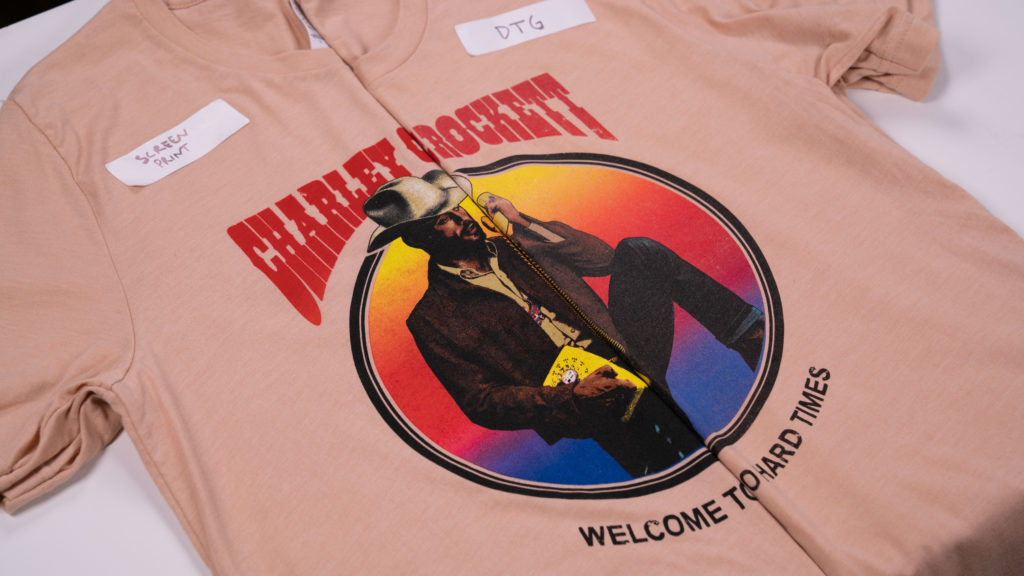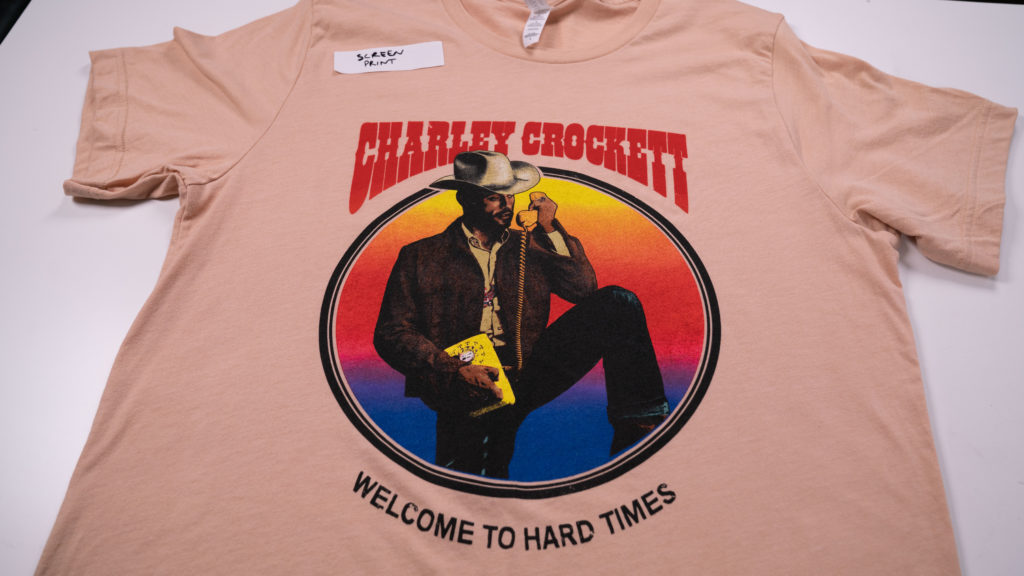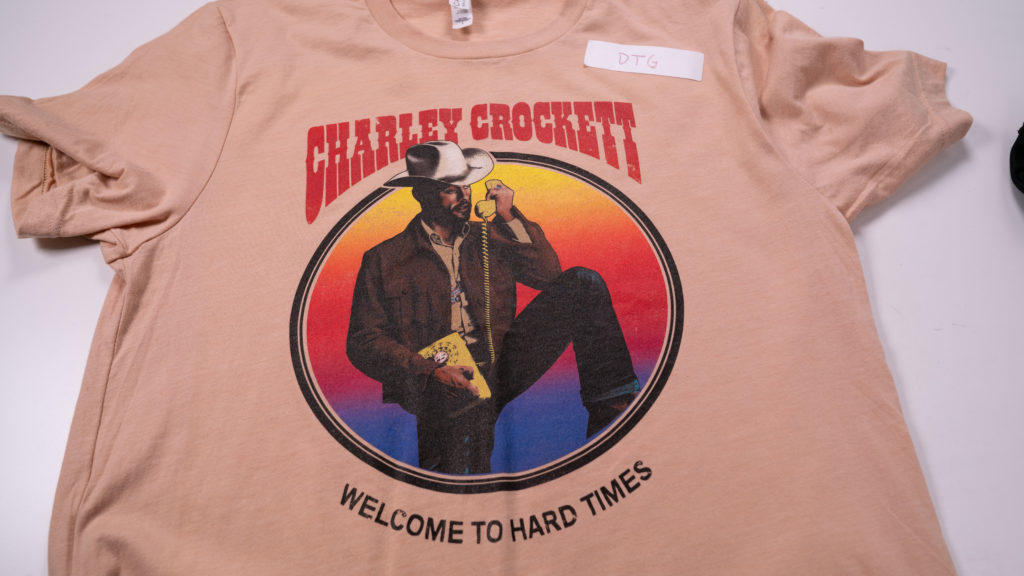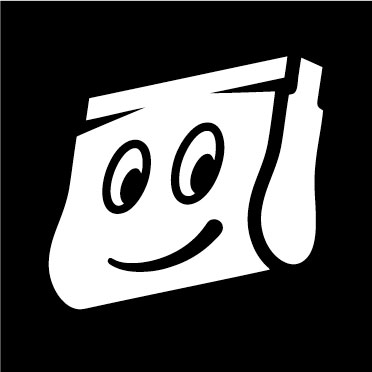Simulated Process VS DTG
What’s the difference??

Two completely different ways to do essentially the same thing, and we put them head to head using this modern classic Charley Crockett design. Watch the video below, and we’ll break it down for you.
Simulated Process
Simulated Process is a screen printing technique in which a high resolution art file is separated into a few colors (usually 7-10 in our shop), and then those colors are blended together using halftones to achieve millions of other colors. Halftones are basically tiny dots, and when we put tiny dots of one color right next to tiny dots of another color, it tricks the eyes into seeing a completely new color. Screen printing with this technique allows us to produce very complex color gradients using only a few screens, and can also be used to create subtle shadows and highlights. This particular design used 9 screens total (including a white underbase) along with plastisol ink to create a very bright and impressive color gradient behind Charley.

DTG
DTG (Direct-to-Garment) is a print method that uses a high-powered inkjet printer (like for your computer) that prints directly onto a garment using water based ink. While simulated process involves preparation and precision alignment of multiple screens, DTG requires preparation of the shirt itself. Regardless of what’s being printed, each shirt must be heat pressed for several seconds in order to create a smooth printing surface. If it requires white ink, whether in the design or as an underbase, the shirt must also be pre-treated with a special solution and heat pressed for over 1 minute. This solution allows white ink to properly adhere to the shirt fibers. Without it, the ink would soak into the shirt and make for a muted, vintage-style print. We wanted the colors in this design to really pop, so it was both pre-treated and underbased. As with screen printing, good quality artwork = good quality prints, and this artwork was primo!

What’s faster?
A full-sized DTG print with an underbase takes about 2 minutes, but that doesn’t include setting up the art files or pre-treating the shirt. It takes about 5 minutes per shirt all-in.
Screen printing takes about 10 minutes per screen to set up, so at 9 screens this print would take about 1.5 hours to dial in. However, once the print is approved we can easily print 300-400 shirts an hour on our ROQ automatic presses.
So what’s better?
Efficiency: For our shop, DTG is best for clients that need under a dozen shirts and have a very colorful design. It should be noted that you will be limited on garment options as DTG is designed for t-shirts that are mostly cotton. Simulated process screen printing is more time intensive in preparation and setup, but for a sizable run of shirts it is by far the most efficient.
Quality: Screen printing is still the winner here. The ability to color match specific Pantones, combined with the opacity and durability of screen printing ink, allows us to deliver a bold and durable print that matches our digital mockup. DTG has its advantages when it comes to printing tons of colors and blending them well, but precisely matching Pantone colors is not guaranteed. The print also doesn’t last as long.
Cost: To put it simply, if you need less than a dozen tees then DTG is probably the way to go. Beyond 12 garments, screen printing is by far more cost-effective. The higher the quantity, the cheaper it gets because we’re not spending as much time preparing and setting up new jobs.
Have an idea and need a quote? Fill out a quote form, and one of our reps will help you with the best method and pricing for your project!



